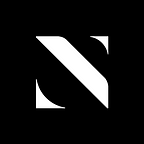Why will NFT become the next trillion-scale trading market?
If the development of blockchain in the past few years is not well-known enough, then the recent NFT that has attracted much attention from the public, and the word “blockchain” has finally appeared in the major media. And, of course, not because of Bitcoin, instead, it was these three weird letters-NFT.
Half a month ago, the world-renowned auction house Christie’s sold a sky-high price NFT named “Everydays: The First 5000 Days” by the well-known digital artist Beeple. It was sold for $69 million, making the artist the third most expensive living artist second to David Hockney and Jeff Koons.
The NFT work is a collage of all the “everyday” images he had produced and released on the Internet over the years since May 1, 2007. It means that these images have no tangible form and only exist in the digital world.
The sale of Beeple’s expensive NFT suddenly appeared on the homepage of major media, and meanwhile, it also led a group of artists to the NFT world and shed a light on blockchain for the public. However, still, most people do not understand what an NFT is and those who buy NFTs sometimes are considered “stupid”.
In the following, we will start with what NFT is, and introduce in detail the development and value of NFT, as well as expectations for the future trading market.
What is NFT?
With the outbreak of the third industrial revolution, mankind has entered the era of science and technology. Some emerging technologies and industrial revolutions have become changing forces of the world. And with the rapid development of blockchain, it seems only a matter of time before NFTs catch the public’s attention.
More and more people are paying attention to NFTs. Twitter CEO Dorsey’s first tweet was sold at a sky-rocketing price of US$2.5 million as an NFT. AC Milan has joined the Ethereum digital football NFT collection platform Sorare. And not to mention the popularity of the global NBA Top Shot, NFT has become unprecedentedly popular in the public.
So, what exactly is NFT?
1.1 The definition of NFT
NFT stands for Non-Fungible Token, meaning it cannot be divided, replaced, or changed which makes every NFT unique.
Before we explain NFT, let’s first take a look at what a Fungible Token is. The concept of FT came into being with the emergence of blockchain. All tokens are attached to the existing blockchain and recorded by Smart Contracts. Bitcoin, Ethereum, Polkadot, etc. are all Fungible Tokens which are exchangeable for each other and can be divided into smaller parts.
For example, if one owes 10 Bitcoins, there is no difference between these 10 Bitcoins, and these Bitcoins are Fungible Tokens. And if he numbers every Bitcoin, then we cannot say that the No.2 bitcoin is No.1 bitcoin, and thus, the numbered Bitcoins become NFTs. It is similar to Chinese Yuan since there are no papers with the exact same serial number, nor will there be two exact same NFTs.
In a nutshell, NFT is a programmable token that can be traced and confirmed with its ownership and value. This type of token has unique features and data. Perhaps you are still a little confused about NFTs. Let’s further trace the origin of NFTs to analyze its core definition.
1.2 History
The emergence of NFT is not a coincidence. In recent years, artists and related markets have gradually fallen into a dilemma. With the advent of the digital age, copyrights can hardly be protected since one can just click the shot button or double-clicking to copy the digital assets. Protecting the artists’ interests has always been an issue explored by the art market.
Due to the decentralized, unhackable and secure features, blockchain is able to protect privacy. And as early as 2013, cryptographic artists used Bitcoin transaction scripts to create works in the ASCII format. It wasn’t considered promising at that time, however, due to the limitation of the number of script bytes.
It was not until 2017 that Ethereum token standard, ERC721, began to emerge as a topic among communities, making it possible for NFT to become popular today. ERC721, as a unique identifier on the blockchain, renders each token corresponding to a unique item, and also gives NFT unique characteristics.
The earliest application of this standard was a pixel avatar project called CryptopPunks developed by Larva Labs. The total number of these pixel avatars is capped at 10,000 and can be picked up by those who own an Ethereum wallet.
What is unexpected is that six months later, the game Cryptokitties developed by Dapper Labs quickly became popular and boosted the NFT market.
This online cat game has gone through several rounds of ups and downs of the price and perhaps it has no extraordinary value in itself. However, Cryptokitties is of revolutionary significance to the development and practice of NFTs, attributing its status as a medium that carries values.
